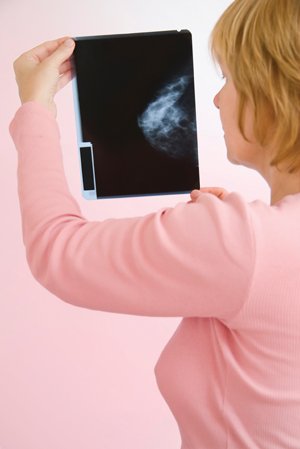
Mayo Clinic researchers found that screening mammography rates for women aged 40 to 49 went down by almost 6 percent since November 2009.
by Mary Budinger —
A study by the Mayo Clinic has found that fewer women in their 40s are getting screening mammograms since the U.S. Preventive Services Task Force (USPSTF) recommended that screening mammograms start at age 50 instead of 40.
Mayo Clinic researchers found that screening mammography rates for women aged 40 to 49 went down by almost 6 percent since November 2009. The results were presented at the Academy Health Annual Research Meeting, June 24-26, 2012.
The value of routine screening mammograms was questioned in November 2009 when the USPSTF recommended that routine screening mammograms for women with an average risk of breast cancer should start at age 50 instead of age 40. Mammograms reportedly have an overall accuracy rate of just 67 percent for women between the ages of 40 and 50 because their breast tissue is denser.
The recommended changes were controversial and were not adopted by the American Medical Association, the American Cancer Society, the Mayo Clinic and others. They all continue to recommend that screening mammograms should start at age 40.
Norwegian researchers also cast fresh doubts on the benefits of mammography screening. Their results, published in the New England Journal of Medicine in 2010, found little benefit. The Norwegian breast-cancer screening program analyzed data from 40,075 women with breast cancer. The combined impact of introducing mammography screening and improving treatment was only a disappointing 10 percent reduction in breast cancer mortality. Moreover, an 8 percent reduction in mortality was noted in women who did not undergo screening but whose cancers were treated by the multidisciplinary teams.
These observations suggest that the relative reduction in mortality that can be attributed solely to screening mammograms is a surprisingly low 2 percent, indicating that the decline in mortality attributed to screening alone may be as few as two deaths prevented per 100,000 women screened. Dr. H. Gilbert Welch wrote in an accompanying editorial that since mammograms may have only reduced the cancer death rate by 2 percent, it is an amount so small that it may as well be zero.
Breast tissue is known to be highly susceptible to the cancer-causing effects of radiation, especially when exposure occurs before menopause. One theory is that for radiation damage of breast tissue to develop into a cancer, there is the need for estrogen stimulation and tissue proliferation that occurs during monthly menstrual cycles. Once the menopausal ages have been reached, this tissue proliferation decreases, and damaged cells fail to develop into cancers.
A 2010 study led by researchers with the U.S. Department of Energy’s Lawrence Berkeley National Laboratory discovered that radiation exposure can alter the environment surrounding the cells, causing future cells to be more at risk of becoming cancerous.
Infrared technology — thermography — has the ability to see suspicious signs of tumor formation perhaps 10 years before the subsequent lump can be felt or seen. Most women have to pay out-of-pocket for a thermogram because insurance does not cover it.
New blood tests are also available now that measure the concentration of proteins in the blood and how they differ from the normal state.
Sources: BreastCancer.org and New England Journal of Medicine, September 2010.
Mary Budinger is an Emmy award-winning journalist who writes about integrative medicine. 602-494-1999.
Reprinted from AzNetNews, Volume 31, Number 4, August/September 2012.





September 4, 2012
August/September 2012 Issue, Breast health, Health, Health Concerns, Natural therapies, Thermography, Women